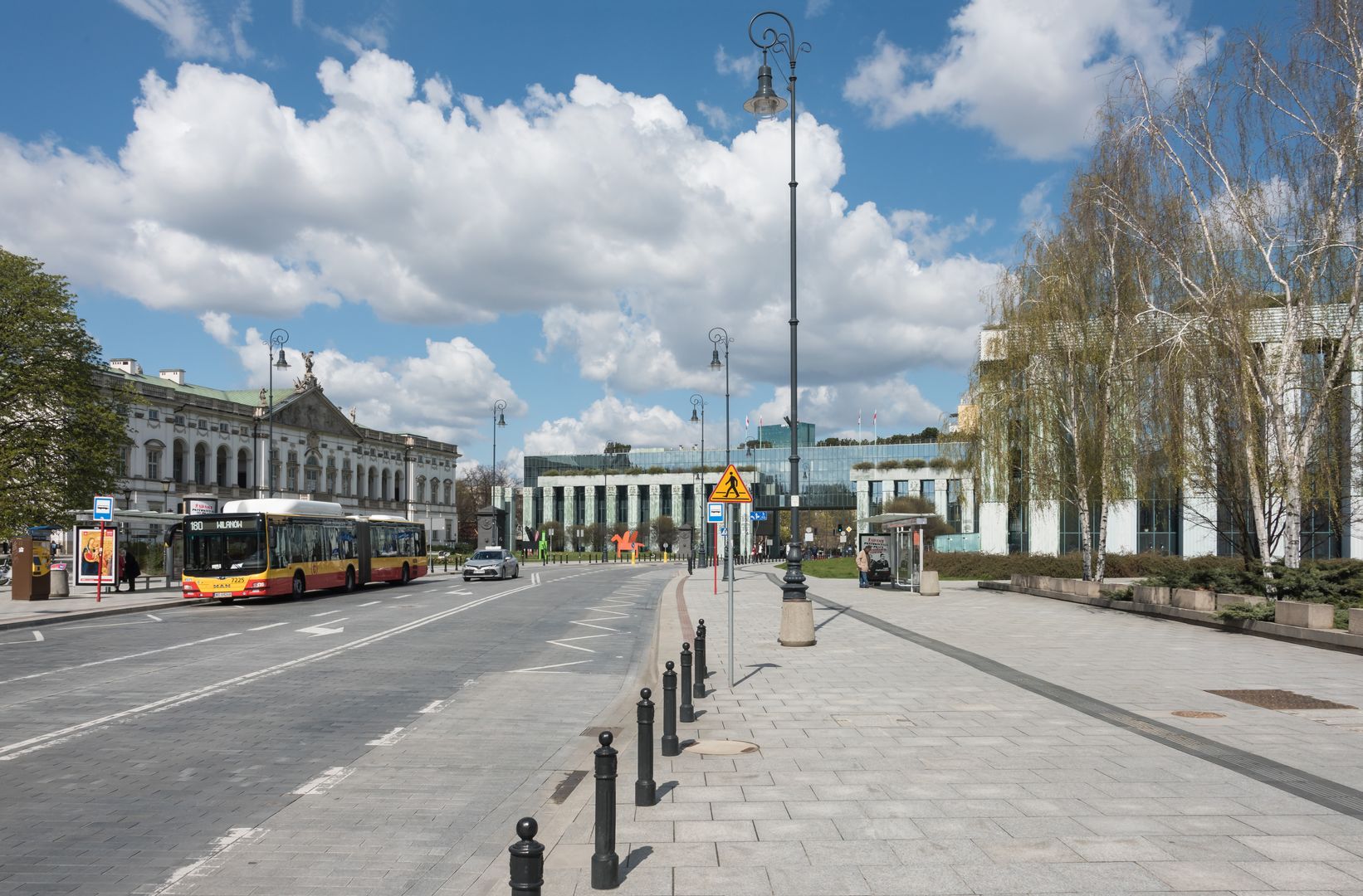Krasiński Square in Warsaw
6.3

Overview
Krasiński Square, located in the Śródmieście district of Warsaw, serves as a significant cultural and historical landmark commemorating the former owners of the Krasiński Palace. Established in the 18th century as part of the palace courtyard, it became a public space after the building was purchased by the Polish–Lithuanian Commonwealth. The National Theatre was constructed nearby, and after the institution relocated to Theatre Square, the square became a venue for wool fairs.
During the 19th century, it witnessed urban transformations, including the construction of the Crown Customs House and the adaptation of its eastern part for new public transportation infrastructure. Gas lighting was installed in 1856, and electric trams began operating in 1908. In the interwar period, the square evolved into a center of justice, housing courts and the Ministry of Justice.
The dramatic events of World War II marked a new chapter in its history, as it became a site where soldiers laid down their arms and was located in close proximity to the Warsaw Ghetto. After the war, the devastated Krasiński Palace was rebuilt, and in 1989, the Warsaw Uprising Monument was unveiled.
In recent years, the square has undergone revitalization, enriched with monuments honoring insurgents and sculptures reflecting cultural themes. A notable moment occurred in 2017 when Donald Trump delivered a speech here during his visit.
Today, key features include the Warsaw Uprising Monument, the Field Cathedral of the Polish Army, and the court complex, making it a place of rich history and cultural significance that continues to engage both residents and visitors.
Location
Tickets
Powered by GetYourGuide
2025 Wizytor | All Rights Reserved